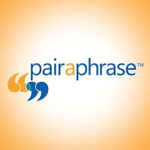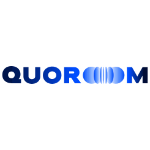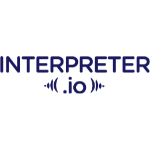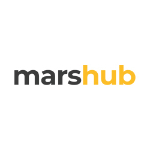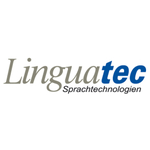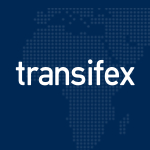TechnologyCounter provides genuine, unbiased real user reviews to help buyers make informed decisions. We may earn a referral fee when you purchase through our links, at no extra cost to you.
List of 15 Best Translation Management Software
Showing 1 - 15 of 50 productsPOEditor is a and user-friendly online localization platform designed to simplify the translation and management of software projects. Developed with efficiency and ease-of-use in mind, POEditor allows individuals and teams to seamlessly collaborate...Read POEditor Reviews
Pairaphrase is a software designed to revolutionize the way we approach language translation. Its intuitive interface technology provide a seamless translation experience for individuals and businesses alike. With Pairaphrase, language barriers are b...Read Pairaphrase Reviews
Crowdin is a tool designed to simplify localization and translation processes for businesses of all sizes. With its intuitive interface and collaborative features, Crowdin allows teams to streamline their content creation and distribution, making it...Read Crowdin Reviews
DeftPDF, the all-in-one solution for all your PDF needs. Whether you need to convert, merge, split, or edit PDF documents, DeftPDF has got you covered with its user-friendly interface and powerful features. Say goodbye to the hassle of dealing with m...Read DeftPDF Reviews
Quoroom is the innovative solution for all your virtual meeting needs. With an intuitive interface features, Quoroom streamlines communication and collaboration for teams and individuals alike. Say goodbye to endless email chains and clunky video con...Read Quoroom Reviews
Interpreter IO, is a solution for effective communication across language barriers. With its advanced technology design, it simplifies the translation process for businesses and individuals alike. Say goodbye to misunderstandings and language barrier...Read Interpreter IO Reviews
MarsHub, the all-in-one solution for seamless project management. Simplifying the complex process of collaboration, MarsHub allows teams to streamline tasks, track progress, and achieve success. With its user-friendly interface features, MarsHub is t...Read MarsHub Reviews
Texterify is a language management software designed to streamline the translation process for businesses of all sizes. With a user-friendly interface and a variety of innovative features, Texterify simplifies the localization process and makes it ea...Read Texterify Reviews
I18Nature an innovative software designed to transform the way we interact with nature. With its unique features and user-friendly interface, I18Nature offers a seamless experience for nature enthusiasts to explore and discover the beauty of the natu...Read I18Nature Reviews
LinguaScribe is an innovative is a software that caters to all your language needs. Designed to revolutionize the way you work with languages, this advanced tool allows you to effortlessly transcribe, translate, and proofread any text with precision...Read LinguaScribe Reviews
VidScribe AI is a software that transcribes and translates your videos in a matter of minutes! Say goodbye to hours of tedious transcribing and editing, and hello to effortlessly reaching a global audience. With its advanced artificial intelligence t...Read VidScribe AI Reviews
Translized is a language translation software that simplifies communication across borders. With an easy-to-use interface and fast processing power, Translized makes language barriers a thing of the past. Say goodbye to confusing translations and emb...Read Translized Reviews
Plunet BusinessManager is a project management software for businesses of all sizes. With its intuitive and user-friendly interface, it streamlines all aspects of project management, from budgeting and time tracking to communication and analytics. Sa...Read Plunet BusinessManager Reviews
Personal Translator is a dynamic translation software designed to break language barriers and bridge communication gaps. With its advanced features and user-friendly interface, Personal Translator offers seamless translations in multiple languages, m...Read Personal Translator Reviews
Transifex is a dynamic software that allows individuals and businesses to easily manage their translation projects. With its user-friendly platform, teams can collaborate, track progress, and deliver high-quality translations efficiently. Get ready t...Read Transifex Reviews
- What Is Translation Management Software?
- Top Reasons Why Businesses Need Translation Management Software?
- What Are the Top Key Features of Translation Management Software?
- What Are the Top Benefits of Translation Management Software?
- What Are the Steps to Choose the Right Translation Management Software?
- What Are the Types of Translation Management Software for Different Industries?
- What Are the Technology Trends for Best Translation Management Software?
- What Are the Deployment Options for Translation Management Software?
What Is Translation Management Software?
Translation management software (TMS) is a software application designed to facilitate the streamlined process of translating and localizing content in an efficient manner.
Online translation management system application is utilized for the purpose of effectively managing projects related to document translation. Its primary functions include coordinating workflows and ensuring coherence and uniformity across several iterations of material in diverse languages. This tool has the capability to store and effectively arrange content, facilitate the management of translation processes, and foster collaboration among linguists and localization teams.
The best translation management software additionally facilitates the automation of some procedures, hence enhancing the efficiency of content distribution. The utilization of a Translation Management System TMS enables enterprises to efficiently and expeditiously transform their information into diverse linguistic variations.
Projects can be effectively monitored and administered inside a centralized platform, enabling users to access comprehensive information regarding file status, engage in seamless communication with project managers or linguists, and promptly identify and resolve any encountered issues throughout the project lifecycle.
The online translation management system also possesses the capability to assure coherence across content in several languages, thereby guaranteeing that translations adhere to brand standards.
In relation to financial implications, the utilization of Translation Management Systems TMS yields a substantial reduction in expenses for translation endeavors through the streamlining of workflow processes and facilitation of expedited project completion.
Top Reasons Why Businesses Need Translation Management Software?
1. Cost-effective : Translation management software can be utilized by businesses as a means to efficiently and economically adapt products and services for new markets through localization.
2. Enhanced efficiency: Translation management tools enable firms to efficiently and effectively manage translation projects, facilitating faster project completion and enhancing overall project management processes.
3. Improved cost savings: Through the utilization of translation memory, enterprises have the opportunity to reduce expenses associated with translation by eliminating the need to compensate for redundant tasks.
4. Simplified collaboration: By utilizing a unified interface, organizations may effectively coordinate and oversee teams of linguists and other contributors, hence facilitating seamless collaboration in the context of translation projects.
5. Increased accuracy: Business enterprises may effectively guarantee the accuracy of their translations by utilizing online translation management system, which facilitates the storage and retrieval of translated text.
6. Quality control: The best translation management software enables business owners to promptly identify potential quality concerns in their translated content, encompassing typographical problems, syntactical inconsistencies, and grammatical inaccuracies.
7. Automated workflow: Business enterprises have the potential to enhance efficiency and reduce costs through the implementation of automation in routine translation activities, including but not limited to terminology management, quality assurance, and post-editing.
8. Multi-platform compatibility: Translation management software is capable of being utilized across several platforms, including online browsers, desktop applications, and mobile apps, so providing organizations with the advantageous ability to conveniently access their projects from any geographical location.
9. Automated updates: Organizations have the capability to conveniently verify the currency and precision of their translated materials, thereby guaranteeing the accuracy and timeliness of their linguistic adaptations.
10. Accessibility: The best translation management software enables enterprises to securely store and conveniently access their translated content from any geographical location, hence facilitating prompt responses to market dynamics and client demands.
11. Project tracking: Project managers have the capability to effectively monitor and oversee the advancement of translation tasks, identify areas of constraint, and promptly identify any resource-related challenges in a live setting.
12. Automated reporting: Organizations have the capability to develop comprehensive reports pertaining to their translation endeavors, enabling them to monitor and document various metrics such as the total number of words translated, the amount of time invested, and the financial expenses incurred.
13. Security and compliance: Business enterprises have the ability to verify that their translated materials adhere to the laws of their intended market by utilizing online translation management system that incorporates automated quality checks.
14. Scalability: Business enterprises possess the capability to conveniently adjust the magnitude of their translation endeavors, either expanding or reducing them, while ensuring that neither precision nor expeditiousness is compromised.
15. Integration with existing systems: Translation management tools has the capability to seamlessly interface with pre-existing technologies, such as customer relationship management (CRM), electronic commerce (E-commerce), and enterprise resource planning (ERP) systems. This integration enables firms to optimize their operational workflows and enhance overall efficiency.
What Are the Top Key Features of Translation Management Software?
The top key features of translation management software include:
1. Automated Assignment of Project: Translation management software facilitates the automated allocation of assignments to translators and other team members. Organizing and managing projects in an efficient manner is considered to be a very effective approach.
2. Automated Monitoring: The software facilitates users in effectively monitoring the development of projects through the utilization of real-time progress tracking. Additionally, it maintains a record of project milestones, so ensuring transparency and accountability.
3. Team Collaboration: This software facilitates seamless collaboration among teams, resulting in decreased lead times and ensuring timely project delivery.
4. Automated Tasks & Communications: The program facilitates the automation of administrative duties, including the management of personnel and customer communications. Additionally, it aids in ensuring that consumers are kept well-informed regarding the advancement of the project as well as any potential delays that may arise.
5. Quality Assurance & Review: The best translation management software offers automatic features for quality assurance and review purposes. Additionally, it offers comprehensive reporting and analytics that can be utilized to assess and enhance the precision of translations.
6. Workflow Automation & Routing: The best translation management systems in question facilitates the automation of workflow operations and the routing of tasks across different departments. This practice aids in facilitating the successful execution of projects and offers significant insights to all parties involved.
7. Security: Translation management tools also offers robust security measures. The use of robust security measures ensures the protection of client data and information, thereby adhering to the applicable industry standards.
What Are the Top Benefits of Translation Management Software?
1. Facilitates Collaboration: Translation management software facilitates collaborative work on a shared project by offering several entry points and tools for team supervision.
2. Streamlines Localization Process: The best translation management systems serves as a centralized platform that facilitates the storage and retrieval of files pertaining to the translation and localization procedures, accommodating the needs of various stakeholders involved.
3. Automates Tasks: The best translation management systems automate a range of operations, including quality assurance checks, content tracking, and automatic notifications. This results in time savings and enhanced resource allocation.
4. Improved Efficiency: Translation management software plays a crucial role in facilitating effective communication and information exchange among many stakeholders, hence enhancing the speed and efficiency of answers.
5. Enhanced Quality Control: The implementation of automated quality checks and linguistic consistency checks serves to uphold the utmost levels of quality.
6. Optimized ROI: The implementation of centralized project cost tracking and comprehensive accounting records is crucial in order to optimize the return on investment.
7. Increased Accuracy: The implementation of automation in manual operations has been found to enhance accuracy, leading to a reduction in errors and an overall enhancement in customer happiness.
8. Cost Savings: By implementing automation processes to replace manual labor, firms have the potential to achieve significant time and cost savings.
9. Flexible Approaches: Various tactics can be employed to effectively convey the intended message in different languages and cultures.
10. Scalability: The best translation management systems has the capability to expand its capacity in order to accommodate the growing need for translations or language assistance.
What Are the Steps to Choose the Right Translation Management Software?
1. Define Your Needs: Prior to selecting a translation management system, it is imperative to ascertain the specific requirements for translation and language services. Consider the existing language requirements of your company, the specific content that has to be translated, the present and future scale and extent of your organization, as well as your financial resources.
2. Research Solutions: Conduct a comprehensive investigation on the various translation management systems TMS currently accessible and subsequently refine the selection to those that align most effectively with the specific requirements of your organization. Conduct a comprehensive analysis of pricing and features, and thereafter make a comparative assessment.
3. Check for Compatibility: Online translation management software is imperative to ensure that the translation management system under consideration is compatible with the other software and systems employed, as well as functional on the devices or operating systems utilized by the firm.
4. Take a Trial: Kindly request a trial version of the program in order to conduct a preliminary assessment and ascertain its functionality. Please verify whether customer support is offered during the trial time and assess its alignment with your specific requirements.
5. Ask for Reviews: Talk to people who have used the software themselves, or check user reviews online.
6. Choose the Right Translation Management System: After conducting thorough research and performing rigorous testing on various solutions, individuals will be equipped with a more informed perspective to make an appropriate selection of the translation management system TMS that best suits their needs.
What Are the Types of Translation Management Software for Different Industries?
The categorization of translation management software is contingent upon the industry in which it is employed, as well as the particular obstacles that the software aims to overcome. Within the software development sector, there are various options, one of which is the Computer-Aided Translation (CAT) Tool.
This software is classified as a tool that aids development teams in the process of translating apps into other languages and effectively managing localized versions of those applications. The utilization of automation in the translation of text for various languages contributes to the facilitation of the localization process, resulting in increased efficiency.
Online translation management software is a valuable tool within the publishing industry as it aids in streamlining the intricate process of producing print books and e-books in several languages. These systems are frequently coupled with design programs such as Adobe InDesign, enabling content creators to automatically generate translated versions of their documents.
Translation management tools have been developed specifically for the healthcare sector in order to streamline the translation process of crucial patient-oriented content, whilst guaranteeing cultural precision.
Furthermore, translation management software has been embraced by legal businesses and colleges as a means to guarantee accurate translation of foreign language papers into English. In conclusion, there are specialized solutions tailored to meet the needs of multinational corporations, aiming to enhance communication channels across their many foreign offices and divisions.
These solutions frequently aid in the management of papers that encompass many languages, while also facilitating cooperation among diverse language communities. In general, a diverse array of online translation management software systems exists, each tailored to cater to the specific requirements of different businesses.
What Are the Technology Trends for Best Translation Management Software?
In recent times, significant progress has been made in the technological aspects of translation management software. The translation management software of note has been capitalizing on several prominent technology advances, namely machine learning, natural language processing (NLP), artificial intelligence (AI), neural networks, and cloud computing.
The integration of machine learning algorithms into translation management software facilitates the automation of language translation procedures and diminishes reliance on manual labor. Through the utilization of machine learning methods, the program possesses the capability to ensure precise translation replies and contribute to the reduction of expensive errors.
Furthermore, the utilization of natural language processing (NLP) serves as a potent mechanism in enhancing the precision of translations through the application of semantic and syntactic analysis.
Natural Language Processing (NLP) facilitates the transformation of unstructured data and textual information into valuable results that can be effectively utilized in translation endeavors. Furthermore, the integration of artificial intelligence (AI) capabilities into online translation management software is being implemented with the aim of diminishing workloads and expediting the translation process.
The utilization of artificial intelligence (AI) technology in software enables the precise detection of faults and deficiencies in translations, hence facilitating the provision of suitable recommendations for necessary modifications and corrections.
Furthermore, artificial neural networks have the capability to develop tailored translation models that yield precise and reliable translations across several languages. Neural networks are employed for the purpose of extracting the contextual information from a source document, so ensuring the preservation of the original meanings in the translated text.
In recent times, the utilization of cloud computing has been increasingly prevalent in translation endeavors, owing to its facilitation of the storage, organization, and dissemination of both source and translated data. Cloud computing enables firms to optimize the translation process and acquire the necessary resources for intricate projects.
What Are the Deployment Options for Translation Management Software?
The implementation of translation management software can be achieved through two methods: on-premise deployment or cloud-based deployment. The acquisition of on-premise deployment entails the procurement of software through either a single payment or an annual subscription, contingent upon the selected provider.
The translation management systems is thereafter deployed onto the servers owned by the customer, and its ongoing maintenance is carried out by the technical team employed by the customer. This alternative provides increased autonomy in the implementation and administration of the program; yet, it necessitates the customer to possess the requisite technical proficiency and support framework.
Cloud-based deployment enables users to conveniently access software using a web browser, irrespective of their location, as long as they are connected to the internet. Typically, this methodology is commonly provided through a subscription model, wherein many plans are available to cater to the diverse requirements of customers.
Cloud-based deployment eliminates the need for customers to engage in technical setup, hence enabling faster deployment durations. Consequently, this deployment method has gained popularity among small firms and startups.

